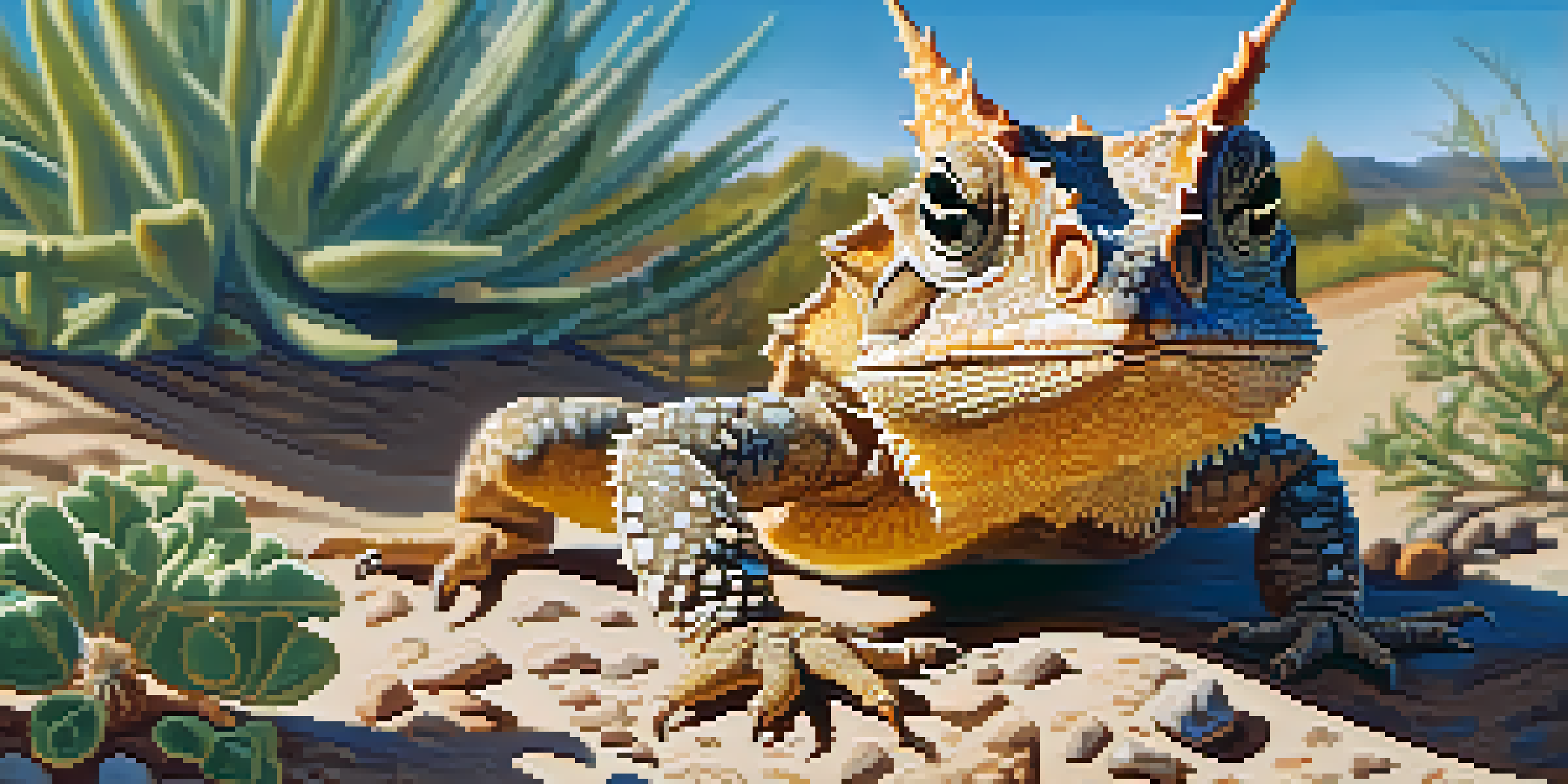Conservation Efforts: Protecting Texas's Endangered Species

Understanding Endangered Species in Texas
Texas is home to a rich tapestry of wildlife, including many species that are endangered. These species face threats from habitat loss, pollution, and climate change, making conservation efforts crucial. Understanding which species are at risk, like the Texas horned lizard and the Golden-cheeked Warbler, helps us focus our efforts effectively.
In every walk with nature, one receives far more than he seeks.
Endangered species are defined as those at risk of extinction, and in Texas, the list continues to grow. This situation not only affects wildlife but also impacts entire ecosystems. Each species plays a unique role, contributing to the biodiversity that sustains our environment.
Conservation efforts aim to protect these vulnerable species by restoring habitats and creating protective regulations. By raising awareness and investing in research, we can better understand the needs of these animals and work together to ensure their survival.
Key Legislation Supporting Wildlife Conservation
One of the cornerstones of wildlife protection in the U.S. is the Endangered Species Act (ESA), enacted in 1973. This law provides a framework for the conservation of threatened and endangered plants and animals. In Texas, the ESA has been instrumental in protecting numerous species from extinction.

Additionally, state laws complement federal regulations, offering further protections for local wildlife. The Texas Parks and Wildlife Department (TPWD) plays a pivotal role in implementing these laws and engaging in recovery planning. Together, these legal frameworks help ensure that conservation efforts are both effective and sustainable.
Texas Faces Endangered Species Crisis
Many species in Texas, like the Texas horned lizard and the Golden-cheeked Warbler, are endangered due to habitat loss and climate change, highlighting the urgent need for conservation.
These laws also foster partnerships between government agencies, non-profits, and local communities. By working together, stakeholders can share resources and knowledge, creating a more comprehensive approach to conservation.
Habitat Restoration Projects Across Texas
Habitat restoration is a critical component of conservation efforts in Texas. Projects across the state focus on restoring native vegetation, which is essential for the survival of many endangered species. For example, efforts to restore coastal marshlands benefit both the environment and species like the endangered whooping crane.
The environment is where we all meet; where we all have a mutual interest; it is the one thing all of us share.
Community involvement is key to successful habitat restoration. Local volunteers often participate in tree-planting events or clean-up initiatives, fostering a sense of ownership and responsibility for the environment. These hands-on experiences not only help restore habitats but also educate participants about the importance of biodiversity.
Moreover, habitat restoration can yield economic benefits by enhancing eco-tourism and recreational opportunities. As habitats improve, wildlife populations can flourish, attracting visitors and boosting local economies.
Education and Awareness: Engaging the Community
Education plays a pivotal role in conservation efforts, as it empowers communities to take action. Programs aimed at schools and local organizations help raise awareness about endangered species and their habitats. This knowledge can inspire individuals to become advocates for conservation.
Interactive workshops, nature walks, and citizen science projects provide hands-on experiences that deepen understanding. When people can connect with nature on a personal level, they are more likely to support conservation initiatives. This grassroots approach fosters a culture of stewardship for the environment.
Education Boosts Conservation Efforts
Community education initiatives, such as workshops and social media campaigns, empower individuals to advocate for endangered species and promote environmental stewardship.
Moreover, social media campaigns and public outreach events can amplify conservation messages. By leveraging these platforms, organizations can reach a broader audience, encouraging more people to join the cause.
Success Stories: Species Making a Comeback
Despite the challenges, there are several success stories in Texas's conservation efforts. The recovery of the American alligator is a notable example; once endangered, it is now thriving due to habitat protection and regulated hunting. This success illustrates the positive impact of focused conservation strategies.
Another inspiring tale is that of the Black-capped Vireo, a small songbird that faced extinction due to habitat loss. Through targeted recovery efforts, including habitat restoration and management, its population has rebounded significantly in recent years. These victories highlight that with commitment and resources, we can make a difference.
Success stories not only provide hope but also serve as powerful reminders of what is achievable. They motivate further investment in conservation and encourage communities to participate actively.
The Role of Non-Profit Organizations in Conservation
Non-profit organizations play a crucial role in conservation efforts across Texas. Groups like the Texas Nature Conservancy and the Sierra Club work tirelessly to protect habitats and advocate for endangered species. Their efforts often include fundraising, educational outreach, and hands-on conservation projects.
These organizations also collaborate with government agencies to implement conservation strategies. By combining resources and expertise, they can amplify their impact and reach more communities. This teamwork is essential for addressing the complex challenges facing endangered species.
Success Stories Inspire Hope
Notable recoveries, like that of the American alligator and the Black-capped Vireo, showcase the effectiveness of targeted conservation strategies and motivate continued efforts.
Moreover, non-profits often rely on volunteers and community support to carry out their missions. This grassroots involvement creates a network of passionate individuals dedicated to preserving Texas's natural heritage.
Future Challenges and the Path Ahead
As we look to the future, several challenges remain in the fight to protect endangered species in Texas. Climate change poses a significant threat, altering ecosystems and impacting species' habitats. Addressing these changes requires innovative solutions and adaptive management strategies.
Additionally, urban development continues to encroach on wildlife habitats, creating a pressing need for sustainable planning. Balancing growth with conservation is crucial for ensuring that future generations can enjoy the rich biodiversity of Texas. Engaging local communities in these discussions can lead to more effective solutions.

Despite these challenges, there is hope. By continuing to invest in conservation efforts and fostering collaboration among stakeholders, we can create a brighter future for Texas's endangered species.